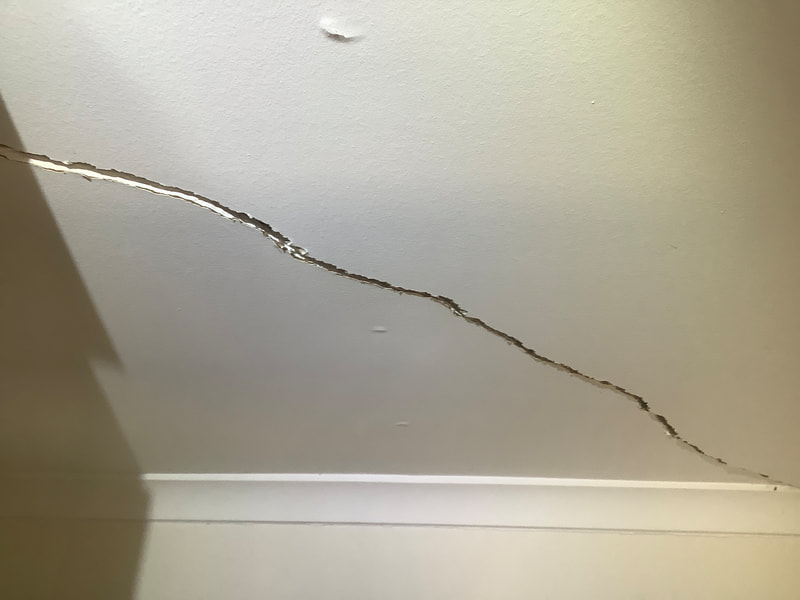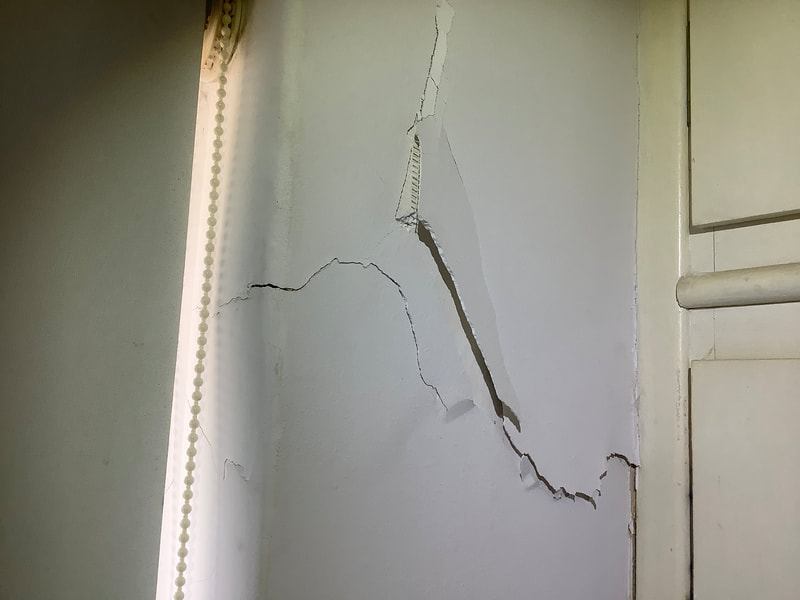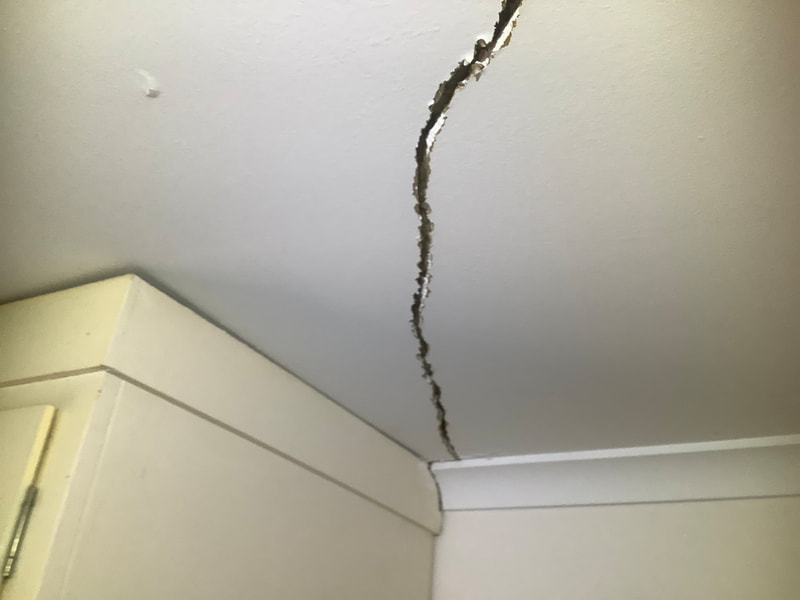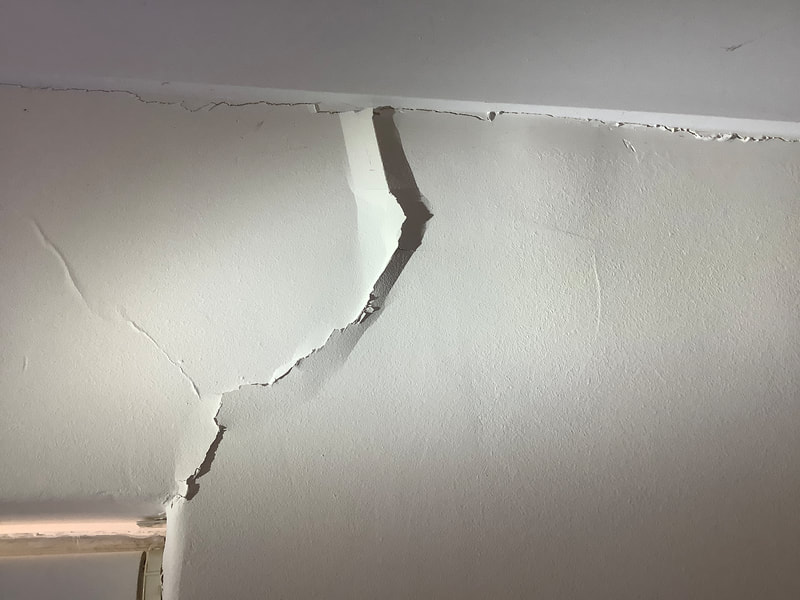All concrete slabs and footings are engineered to be serviceable for the life of the house, however the engineers do request that the entire perimeter of the house be surrounded by pathways that direct water away from the slab edge. When looking at houses for sale, quite often this has been neglected.
Understanding that cracks in ceilings or walls are due to slab heave, that occurs when the soil moisture content under the house has been changed and is no longer uniform under the slab. Reactive clay soils will swell when damp and shrink when dry. When the soil around the outside of the house becomes wet the clay soils absorb moisture and expand pushing up on the external edges of the slab or strip footing. The soil in the middle of the slab remains constant, so the expansion of the slab and cracking of the walls begin. These expansive forces are powerful enough to lift a house and easily crack the concrete strip footings of older homes.
If for example you do spend many thousands of dollars with either resin injection or underpinning, but do not rectify what caused the issues, you may soon find out that any warranty provided by the companies involved is probably void.
In lots of cases simply doing what was requested by the original engineer, making sure that water is directed away from the house and that the house has a decent pathway surrounding the slab to prevent heave is all that may be required.
I would suggest simply doing this and observing the cracking is a great start, then if the ground is not more stable after a year or so, then consider spending your money with an established underpinning or resin injecting business. You may only require patience, some quality crack filler and a slap of paint to keep it looking good.




 RSS Feed
RSS Feed